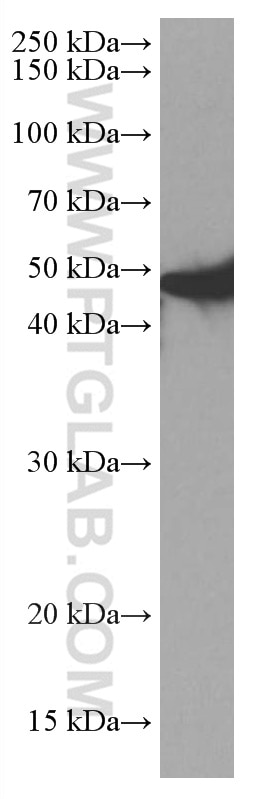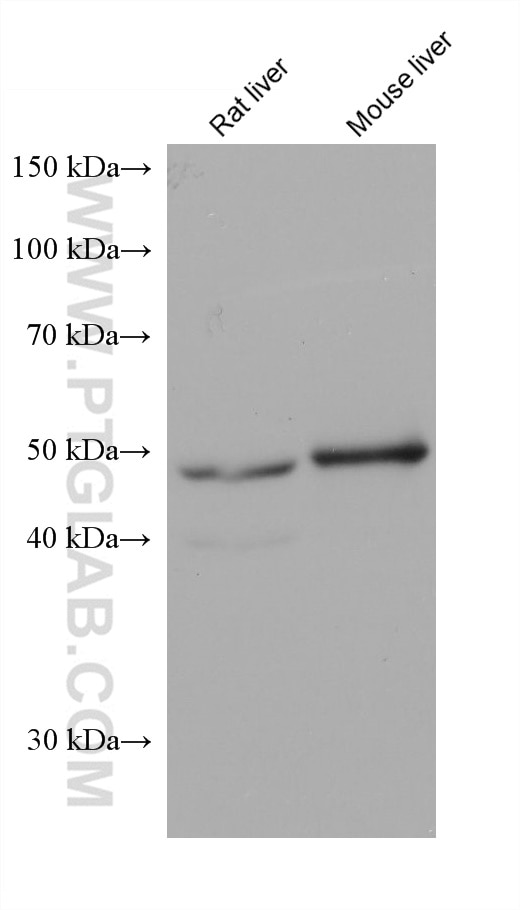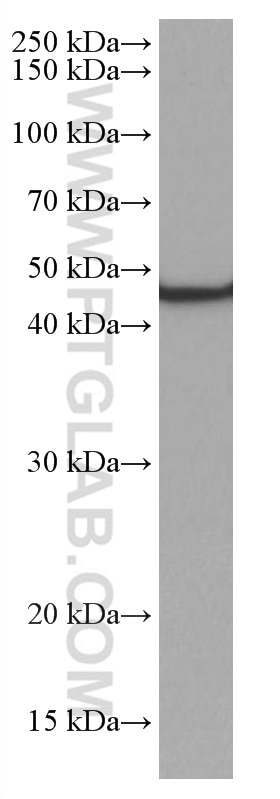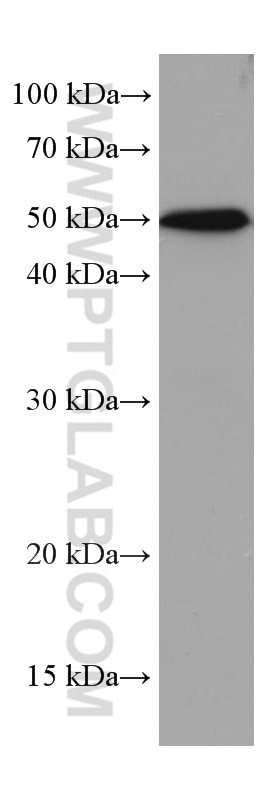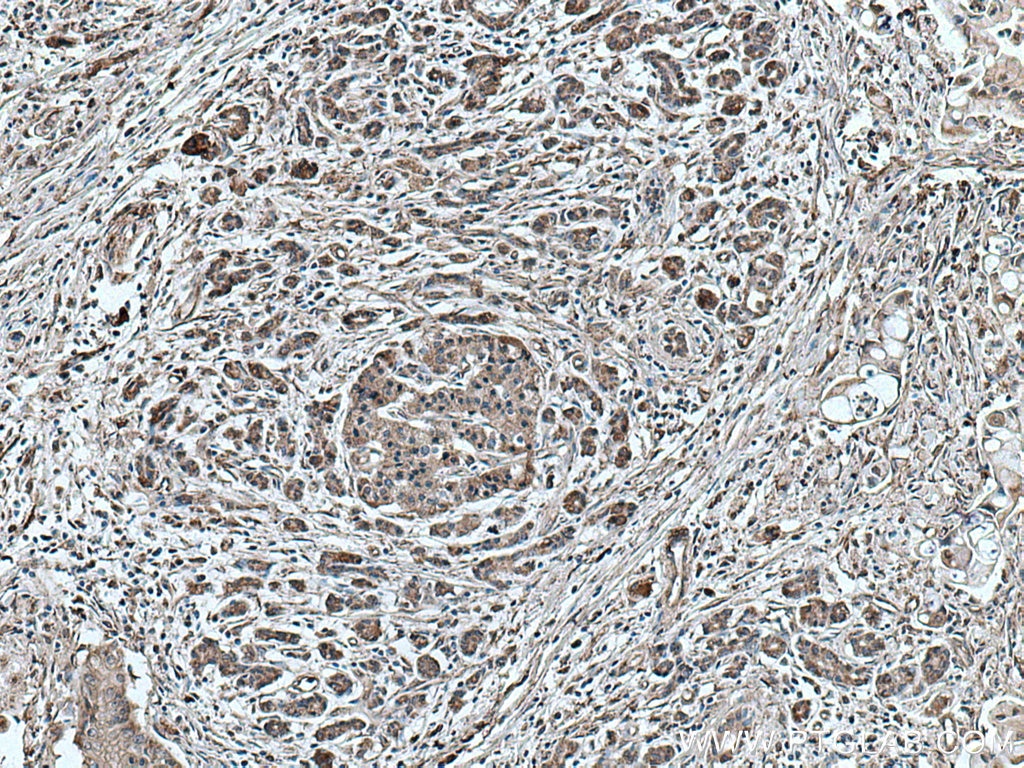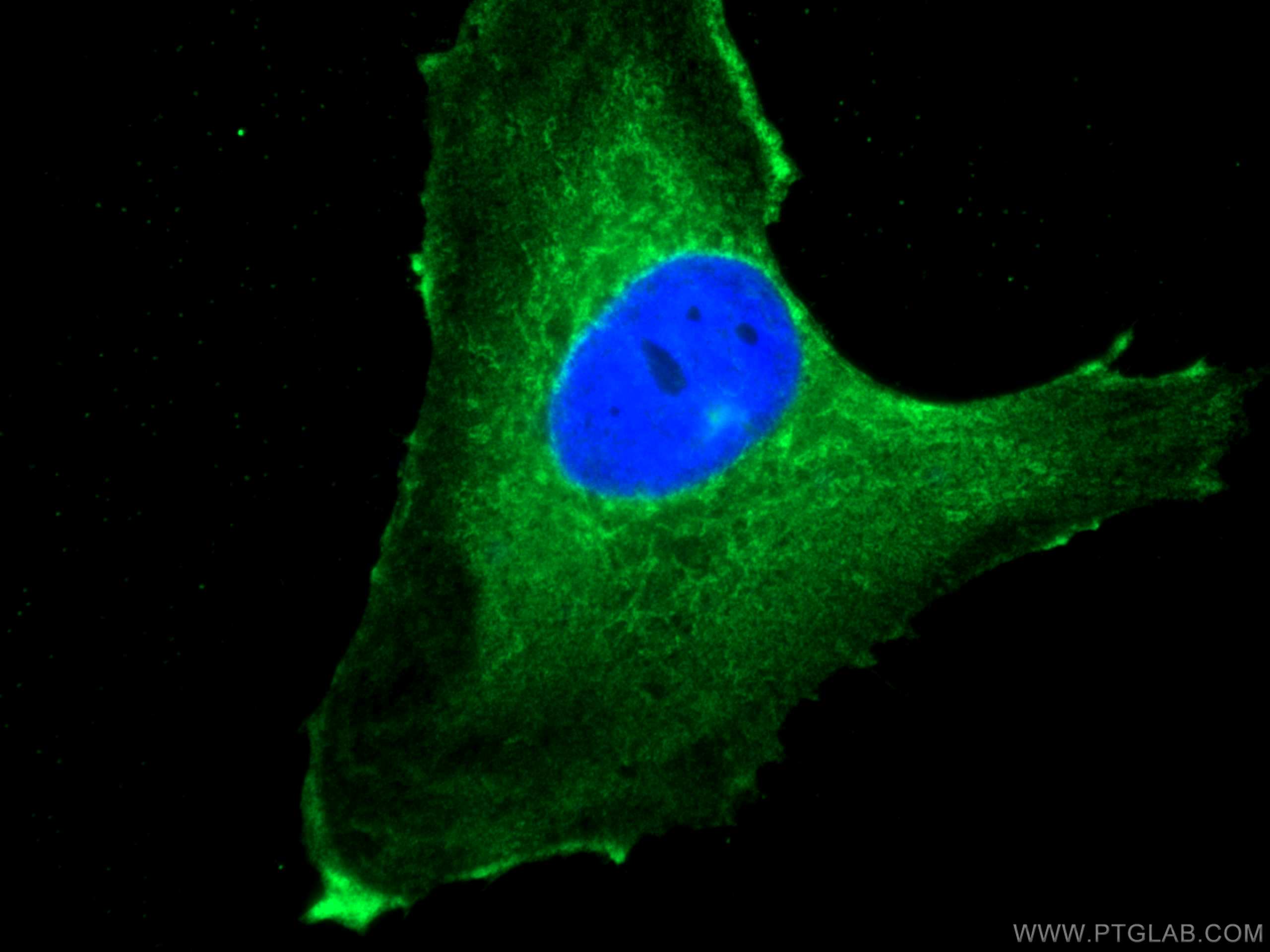Anticorps Monoclonal anti-NEU1
NEU1 Monoclonal Antibody for WB, IHC, IF/ICC, ELISA
Hôte / Isotype
Mouse / IgG1
Réactivité testée
Humain, porc, rat, souris
Applications
WB, IHC, IF/ICC, IP, ELISA
Conjugaison
Non conjugué
CloneNo.
1F6D1
N° de cat : 67032-1-Ig
Synonymes
Galerie de données de validation
Applications testées
| Résultats positifs en WB | cellules PC-12, tissu hépatique de porc, tissu hépatique de rat, tissu hépatique de souris, tissu pancréatique de rat |
| Résultats positifs en IHC | tissu de cancer du pancréas humain, il est suggéré de démasquer l'antigène avec un tampon de TE buffer pH 9.0; (*) À défaut, 'le démasquage de l'antigène peut être 'effectué avec un tampon citrate pH 6,0. |
| Résultats positifs en IF/ICC | cellules U-251, |
Dilution recommandée
| Application | Dilution |
|---|---|
| Western Blot (WB) | WB : 1:1000-1:6000 |
| Immunohistochimie (IHC) | IHC : 1:150-1:600 |
| Immunofluorescence (IF)/ICC | IF/ICC : 1:50-1:500 |
| It is recommended that this reagent should be titrated in each testing system to obtain optimal results. | |
| Sample-dependent, check data in validation data gallery | |
Applications publiées
| WB | See 5 publications below |
| IHC | See 1 publications below |
| IF | See 3 publications below |
| IP | See 1 publications below |
Informations sur le produit
67032-1-Ig cible NEU1 dans les applications de WB, IHC, IF/ICC, IP, ELISA et montre une réactivité avec des échantillons Humain, porc, rat, souris
| Réactivité | Humain, porc, rat, souris |
| Réactivité citée | Humain, souris |
| Hôte / Isotype | Mouse / IgG1 |
| Clonalité | Monoclonal |
| Type | Anticorps |
| Immunogène | NEU1 Protéine recombinante Ag27945 |
| Nom complet | sialidase 1 (lysosomal sialidase) |
| Masse moléculaire calculée | 45 kDa |
| Poids moléculaire observé | 45-48 kDa |
| Numéro d’acquisition GenBank | BC011900 |
| Symbole du gène | NEU1 |
| Identification du gène (NCBI) | 4758 |
| Conjugaison | Non conjugué |
| Forme | Liquide |
| Méthode de purification | Purification par protéine G |
| Tampon de stockage | PBS with 0.02% sodium azide and 50% glycerol |
| Conditions de stockage | Stocker à -20°C. Stable pendant un an après l'expédition. L'aliquotage n'est pas nécessaire pour le stockage à -20oC Les 20ul contiennent 0,1% de BSA. |
Informations générales
NEU1 (lysosomal sialidase) encodes a kind of lysosomal enzyme that could cleave terminal silic acids from glycoproteins or glycolipids to regulate various biological processes by conformational change (PMID:28130415). In the lysosome, NEU1 is one member of a heterotrimeric complex, the others are beta-galactosidase and cathepsin A. The NEU1 is widely expressed in mammalian tissues and involved in lysosomal storage disorder sialidosis, autoimmune diseases and the malignancy and metastasis of cancer cells (PMID:19075514). NUE1 also expresses on the plasma membrane where it modulates several signalling molecules about inflamation, exocytosis, phagocytosis, cell adhesion and proliferation (PMID:21928149). Addition, it is reported that mutation in NEU1 of human could lead to sialidosis (PMID:14517945).
Protocole
| Product Specific Protocols | |
|---|---|
| WB protocol for NEU1 antibody 67032-1-Ig | Download protocol |
| IHC protocol for NEU1 antibody 67032-1-Ig | Download protocol |
| IF protocol for NEU1 antibody 67032-1-Ig | Download protocol |
| Standard Protocols | |
|---|---|
| Click here to view our Standard Protocols |
Publications
| Species | Application | Title |
|---|---|---|
Eur Rev Med Pharmacol Sci Long non-coding RNA TOB1-AS1 modulates cell proliferation, apoptosis, migration and invasion through miR-23a/NEU1 axis via Wnt/b-catenin pathway in gastric cancer. | ||
Br J Pharmacol Neuraminidase is a host-directed approach to regulate neutrophil responses in sepsis and COVID-19 | ||
Biomed Pharmacother Oseltamivir enhances 5-FU sensitivity in esophageal squamous carcinoma with high SPNS1 | ||
Virology H1N1 swine influenza viruses upregulate NEU1 expression through histone H3 acetylation regulated by HDAC2 | ||
Research (Wash D C) Proteogenomic Characterization of High-Grade Lung Neuroendocrine Carcinoma Deciphers Molecular Diversity and Potential Biomarkers of Different Histological Subtypes in Chinese Population |
